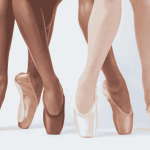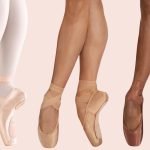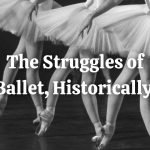Jazz dance has its roots all the way back in the 1600s, when African slaves were taken by ship to America and brought their music and movement with them. Over the centuries, the genre has transformed significantly into the jazz dance we know today, but the rhythm and beat of its African origins remain.
If you want to learn more about the history of jazz dance, read this in depth article ‘History of Jazz Dance’ by Jacqueline Nalett.
Should ballet dancers do other styles of dance?
In the past, industry professionals, and teachers in particular, did not want their dancers to ‘mix’ different styles of dancing – if you’re a ballet dancer, do ballet; if you’re a kathak dancer, do kathak. Today, most dancers and teachers agree that versatility is not only important, but key to ensure a well-rounded, creative and adaptable dancer. Read our blog on the topic here – Classical Dance – Can I Learn More Than One Style? Although the blog speaks about classical ballet and classical Indian dance forms, much of the information can be applied to dance genres across the board.
Why is jazz dance a good idea as an additional dance genre for ballet dancers?
Classical ballet is a highly technical dance form, where a lot of emphasis is placed on the very specialised technique, musicality and artistry of the genre. Jazz technique, in its current form, has a lot of classical elements, and thus ballet dancers will find similarities between the two styles. Plies, tendus and grand battements can all be found in a jazz warmup, much like they are a part of the ballet barre.
Jazz can also be helpful in bringing out the performer in a ballet dancer, with its upbeat music and less rigid technical expectations. Ballet dancers who struggle to be expressive in their classes can benefit from the high energy and popular music in the jazz class. Many artists in the music industry use jazz dance or one of its sub genres, lyrical jazz, rock jazz etc, in their music videos, and students may be inspired to perform and dance like their favourite artists.
Of course, it’s a good idea to do jazz class because it’s fun, too! Turns, jumps, leaps and floor rolls are all part of the offering of a jazz class, so why not?

The 1950s saw jazz dance evolve into what we know today as modern jazz dance. This transition was the result of gradual changes in the style of Broadway choreographers. A famous jazz dancer from this era includes Matt Mattox, a protégé of Jack Cole, known for his angular and sharp technique. Image – Getty Images
Where can I learn jazz dance?
Ms Elina teaches a jazz class at HQ in Ulsoor on Thursday evenings from 6pm-7pm. To signup write to enquiries@tlfcb.org or call +918088006677 or if you are already a ballet student with us, reach out to one of the admins.











Like jazz classes